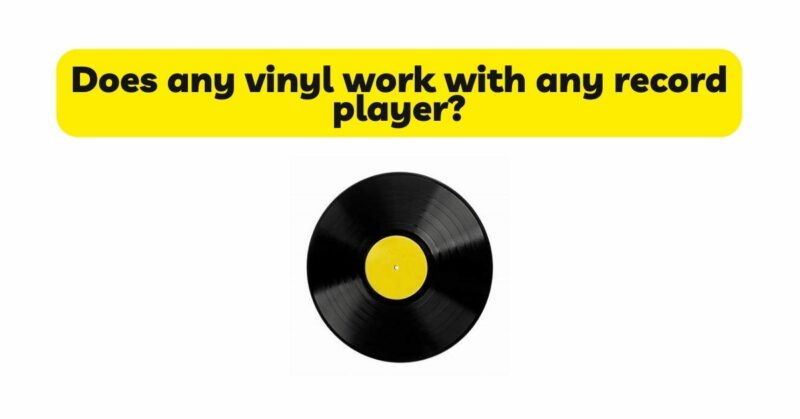In recent years, there has been a resurgence of interest in vinyl records, captivating both dedicated audiophiles and new music enthusiasts alike. Vinyl records offer a unique listening experience, characterized by warm tones and a tangible connection to music’s physical form. As more people embrace vinyl, it’s crucial to understand whether any vinyl record can be played on any record player. In this article, we will delve into the intricacies of vinyl compatibility and explore the factors that determine whether a vinyl record is suitable for a particular record player.
- The Vinyl Record Format:
Vinyl records come in different formats, primarily categorized by their size and rotational speed. The most common formats are the 12-inch LP (long-play) albums, which typically rotate at 33 1/3 revolutions per minute (RPM), and the 7-inch singles, which rotate at 45 RPM. Additionally, there are 10-inch LPs and rare variations like 16-inch transcriptions and picture discs.Each record player is designed to accommodate specific formats. For instance, turntables equipped with a standard-sized platter and tonearm are compatible with 12-inch LPs and 7-inch singles. However, a turntable designed for 7-inch records may not be suitable for playing larger 12-inch albums. Therefore, it is essential to match the record format to the corresponding turntable.
- Cartridge and Stylus Compatibility:
The cartridge and stylus are critical components of a record player’s tonearm that directly interact with the vinyl record’s grooves. The cartridge houses the stylus and is responsible for converting the physical vibrations of the stylus into electrical signals, which are then amplified and sent to speakers. Different cartridges and stylus models have varying tracking forces, stylus shapes, and compliance levels.To ensure optimal playback and prevent damage to both the vinyl and the stylus, it is vital to match the cartridge and stylus to the record player’s specifications. Some turntables have a fixed cartridge or a proprietary mounting system, limiting the options for cartridge upgrades or replacements. In such cases, it is necessary to verify cartridge compatibility before attempting to play different vinyl records.
- Speed Settings and Adjustments:
As mentioned earlier, vinyl records rotate at different speeds, primarily 33 1/3 RPM and 45 RPM. Most record players feature adjustable speed settings to accommodate various vinyl formats. However, not all record players provide this flexibility, especially budget or portable models that may only support a single speed.When purchasing vinyl records, it is crucial to verify the record’s speed compatibility with the record player’s available speed settings. Playing a record at the wrong speed can result in distorted sound, pitch variations, and potential damage to both the stylus and the record. Therefore, it is essential to match the record’s speed requirements with the turntable’s capabilities.
- Condition and Quality of the Vinyl Record:
Apart from technical compatibility, the condition and quality of the vinyl record itself play a significant role in determining playback compatibility. Scratches, warps, and dust particles can impact the sound quality and cause skipping or other playback issues. While modern record players often have anti-skating and tonearm tracking mechanisms to minimize these issues, severe damage may still affect playback.It is advisable to inspect vinyl records for visible defects before attempting to play them on any turntable. Cleaning the record using appropriate methods and equipment, such as carbon fiber brushes or record cleaning machines, can significantly improve playback quality and reduce potential damage to the stylus.
Conclusion:
While vinyl records and record players have a certain degree of compatibility, it is important to understand the nuances involved to ensure optimal playback and preservation of your vinyl collection. Matching the vinyl record format, cartridge and stylus compatibility, speedsettings, and considering the condition of the vinyl record are all crucial factors in determining whether any vinyl will work with any record player.
To summarize, before playing a vinyl record on a particular record player, make sure to:
- Verify that the record format matches the turntable’s capabilities.
- Ensure cartridge and stylus compatibility to prevent damage to both the vinyl and the stylus.
- Check if the record player has adjustable speed settings that align with the vinyl’s required rotational speed.
- Inspect the condition of the vinyl record for any visible defects and clean it appropriately before playback.
By taking these factors into account, you can enhance your vinyl listening experience, ensure compatibility, and extend the lifespan of your vinyl collection. Remember, understanding the compatibility between vinyl records and record players is essential for preserving the integrity of the music and enjoying the unique qualities that vinyl has to offer.


